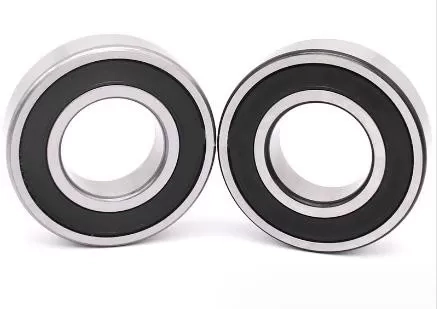At the heart of industrial rotation, there is an indispensable small but powerful component-the deep groove ball bearing. As one of the most commonly used bearings in mechanical equipment, deep groove ball bearings have won the favor of engineers around the world for their excellent performance and wide applicability. But deep groove ball bearings are not just one form. They come in various types, each of which is carefully designed to meet specific working conditions. This article will take you through an in-depth discussion of the different types of deep groove ball bearings, providing a comprehensive and detailed guide to your selection.

Standard deep groove ball bearing: This is the most common type of deep groove ball bearing and comes in standard sizes and designs. They can withstand moderate radial loads and small axial loads and are suitable for general industrial purposes such as motors, gearboxes, etc.
Sealed deep groove ball bearings: In order to prevent dust or lubricant leakage, some deep groove ball bearings are equipped with seals. These seals can be metal shields or rubber lip seals, providing additional protection and suitable for applications in harsher environments.
Flanged deep groove ball bearings: This type of bearing features a flanged outer ring that can be positioned directly in the bearing seat. They are commonly used in agricultural machinery and construction equipment, where bearings need to withstand large loads and shocks.
Deep groove ball bearing with stop ring: Deep groove ball bearing with stop ring can withstand one-way axial load. The function of the stop ring is to limit the axial movement of the bearing and is suitable for occasions where the position of the shaft needs to be controlled.
Stainless steel deep groove ball bearings: To resist corrosion and wear, some deep groove ball bearings are made of stainless steel. This type of bearing is suitable for use in food processing, marine equipment, and other environments where corrosion resistance is required.
Separable deep groove ball bearings: The design of this bearing allows the inner and outer rings to be installed separately, which is very useful for assembly and maintenance. Separable deep groove ball bearings are commonly used in automotive wheels and heavy machinery.
Multi-seal deep groove ball bearings: Under extreme conditions, double or multiple seals may be required to provide better protection. Multi-sealed deep groove ball bearings are suitable for sandy and dusty environments or occasions that require waterproofing.
Double row deep groove ball bearings: With two rows of balls, they can withstand greater loads than single-row design bearings. They are commonly used in industrial machinery and heavy equipment.
Miniature deep groove ball bearings: designed for environments with limited space, such as office equipment and precision instruments. Although small in size, their load capacity and durability cannot be underestimated.
Each deep groove ball bearing has its own unique design and application scenarios. Choosing the right bearing type is critical to ensuring efficient operation and long service life of your equipment. When purchasing deep groove ball bearings, factors such as load conditions, working environment, installation method and maintenance needs should be considered.
In addition, correct installation and maintenance are also key to ensuring the performance of deep groove ball bearings. For example, when installing, you should ensure that the bearing position is accurate to avoid using excessive force to cause deformation; during maintenance, you should regularly check the wear of the bearings and replace damaged bearings in a timely manner.
When choosing a deep groove ball bearing, you should not only consider the type of bearing, but also pay attention to the quality and service of the manufacturer. High-quality manufacturers will provide high-performance products and professional technical support to ensure that your equipment can operate stably, reduce downtime, and improve production efficiency.
The above is an introduction to the various types of deep groove ball bearings and their application fields. I hope it will be helpful to you. If you have any other questions or needs about deep groove ball bearings, please feel free to consult us.
mia
amy@dejin-inc.com

